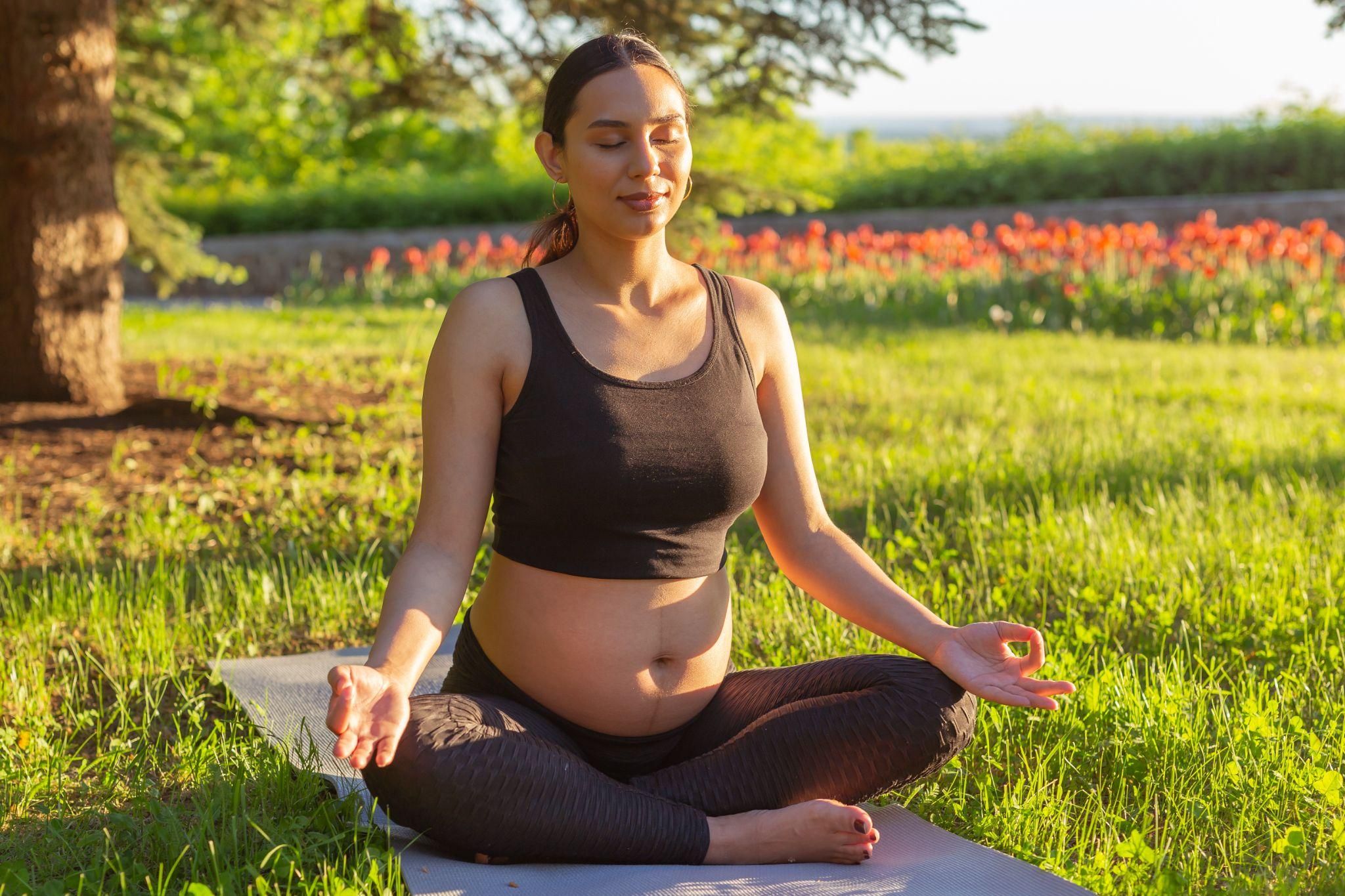Pregnancy is a remarkable journey that transforms not only the body but also the mind. While it brings excitement and anticipation, it can also introduce challenges such as stress, physical discomfort, and anxiety. To address these challenges, combining antenatal breathing with meditation offers a powerful solution. This comprehensive approach not only supports relaxation but also improves overall antenatal health. In this article, we’ll explore the benefits of these practices, provide actionable steps for incorporating them into your routine, and highlight additional strategies to ensure a balanced and healthy pregnancy.
What Is Antenatal Breathing?
Antenatal breathing involves specialised breathing techniques tailored to meet the needs of pregnant women. These methods focus on controlling the breath to calm the mind, improve oxygenation, and prepare the body for labour. Antenatal breathing is a cornerstone of antenatal care, supporting both the physical and emotional well-being of expectant mothers.
The Benefits of Antenatal Breathing
Stress Reduction
Controlled breathing activates the parasympathetic nervous system, reducing stress hormones like cortisol and promoting relaxation.
Improved Oxygen Supply
Deep breathing enhances oxygen delivery to the mother and baby, ensuring optimal growth and development.
Labour Support
Antenatal breathing prepares women to manage contractions, conserve energy, and stay focused during childbirth.
Better Sleep
Many pregnant women struggle with sleep due to discomfort or anxiety. Breathing techniques calm the mind and promote restful sleep.
The Science of Meditation in Pregnancy
Meditation, a practice that fosters mindfulness and mental clarity, complements antenatal breathing by enhancing emotional stability and resilience. During pregnancy, it can help mothers manage fluctuating emotions and build a deeper connection with their growing baby.
Key Benefits of Meditation for Pregnancy
Emotional Well-being
Meditation reduces mood swings and the risk of prenatal depression by encouraging positive thought patterns.
Pain Management
Regular meditation builds mental endurance, helping women handle labour pain more effectively.
Mother-Baby Bonding
Visualisation techniques during meditation strengthen the emotional bond between mother and baby.
Improved Focus and Decision-Making
Mindfulness fosters clarity, enabling mothers to make informed choices about pregnancy care and birth plans.
How Antenatal Breathing and Meditation Work Together
When combined, antenatal breathing and meditation create a holistic framework for relaxation and preparation. They address both the physical challenges and emotional demands of pregnancy, ensuring a balanced approach to antenatal wellness.
Steps to Combine Breathing and Meditation
Find a Quiet Space
Choose a peaceful area where you can sit comfortably without distractions.
Start with Breathing
Begin with a simple breathing exercise, such as diaphragmatic breathing. Inhale deeply through the nose, hold for a few seconds, and exhale slowly through the mouth.
Add Meditation
Close your eyes and focus on your breath or a positive affirmation like, “I am calm and capable.” Allow your mind to settle into a state of mindfulness.
Consistency is Key
Practice this routine for 10-15 minutes daily to build a lasting sense of calm.
Complementary Practices for a Balanced Antenatal Routine
While antenatal breathing and meditation are highly effective, incorporating additional practices like yoga and massage can further enhance your experience.
Antenatal Yoga: Movement and Mindfulness
Prenatal yoga combines gentle movements, stretches, and breathing techniques to improve flexibility, strength, and relaxation during pregnancy.
Benefits of Yoga During Pregnancy
Relieves Physical Discomfort
Yoga poses alleviate common pregnancy aches, such as back pain and sciatica.
Improves Circulation
Enhanced blood flow reduces swelling and improves overall energy levels.
Promotes Relaxation
Many yoga sessions integrate mindfulness and breathing, complementing meditation practices.
How to Get Started
Enrol in a certified pregnancy yoga class or follow online tutorials.
Practice poses like Cat-Cow, Butterfly Stretch, and Child’s Pose, which are safe for most pregnant women.
Consult with your healthcare provider before starting yoga to ensure it suits your health needs.
Antenatal Massage: A Touch of Relief
Antenatal massage focuses on easing muscle tension, reducing swelling, and promoting relaxation. It’s a perfect addition to your antenatal routine.
Benefits of Antenatal Massage
Reduces Muscle Tension
Relieves discomfort in the back, hips, and legs caused by the extra weight of pregnancy.
Improves Sleep
Relaxing massage sessions help the body unwind, leading to better sleep quality.
Boosts Mood
The soothing effects of massage reduce anxiety and promote emotional well-being.
Finding a Specialist
Seek out a certified prenatal massage therapist who understands the unique needs of pregnant women. Many antenatal clinics and wellness centres offer these services.
Professional Support: Antenatal Clinics and Classes
To maximise the benefits of antenatal breathing, meditation, and complementary practices, consider seeking professional guidance through antenatal clinics and classes.
What to Expect from Antenatal Clinics
Antenatal Checkups
Regular checkups monitor your baby’s growth and address any concerns, ensuring a healthy pregnancy.
Antenatal Scans
Ultrasounds provide detailed insights into your baby’s development.
Educational Support
Clinics often offer workshops on breathing techniques, labour preparation, and postpartum care.
Finding Antenatal Classes Near You
Search for antenatal classes near me to join a supportive community of expectant mothers. These classes provide hands-on training in breathing, meditation, and other relaxation techniques, empowering you to feel confident and prepared.
Tips for a Stress-Free Pregnancy
Establish a Routine
Dedicate specific times each day to practice breathing and meditation.
Stay Active
Engage in light exercises such as walking or prenatal yoga to maintain physical health.
Prioritise Nutrition
Eat a balanced diet rich in whole grains, lean proteins, fruits, and vegetables. Include antenatal vitamins to meet nutritional needs.
Seek Support
Connect with friends, family, or other expectant mothers for emotional support. Join online forums or local groups to share experiences.
Take Time for Yourself
Treat yourself to relaxing activities like reading, taking warm baths, or enjoying a pregnancy massage.
Conclusion
Combining antenatal breathing with meditation is a simple yet powerful way to navigate the complexities of pregnancy with grace and confidence. These practices promote both physical health and emotional balance, making them indispensable elements of a comprehensive antenatal care plan.
By incorporating additional practices like prenatal yoga and antenatal massage, and seeking support through antenatal clinics and classes, you can create a holistic approach to your well-being. A stress-free pregnancy is not just a dream—it’s a reality you can achieve with the right tools and mindset.
References
- The Ultimate Antenatal Classes
Prepare for labour, birth, and baby care with nine experts, including senior NHS midwives and an award-winning obstetrician!
https://unii.com/en/journey/ultimate-antenatal-classes









